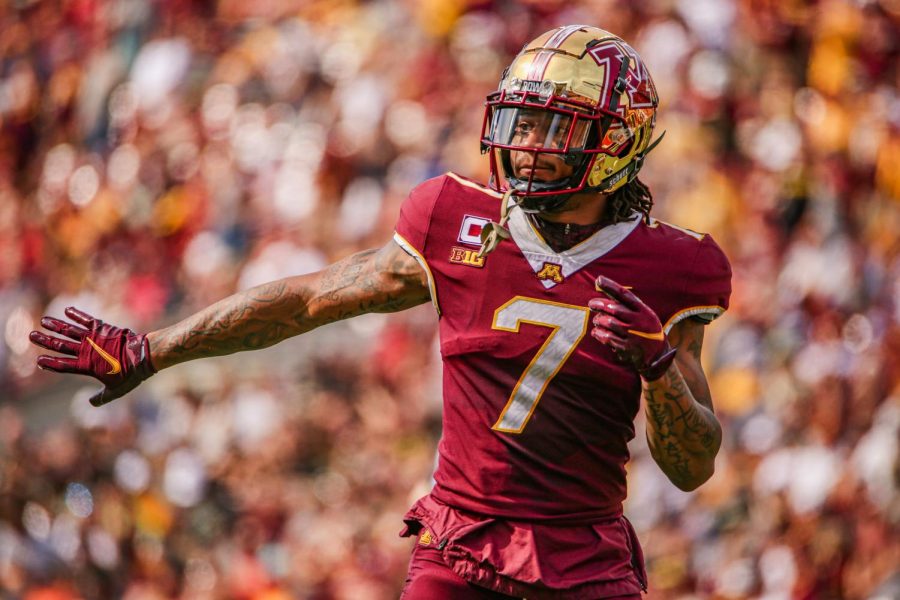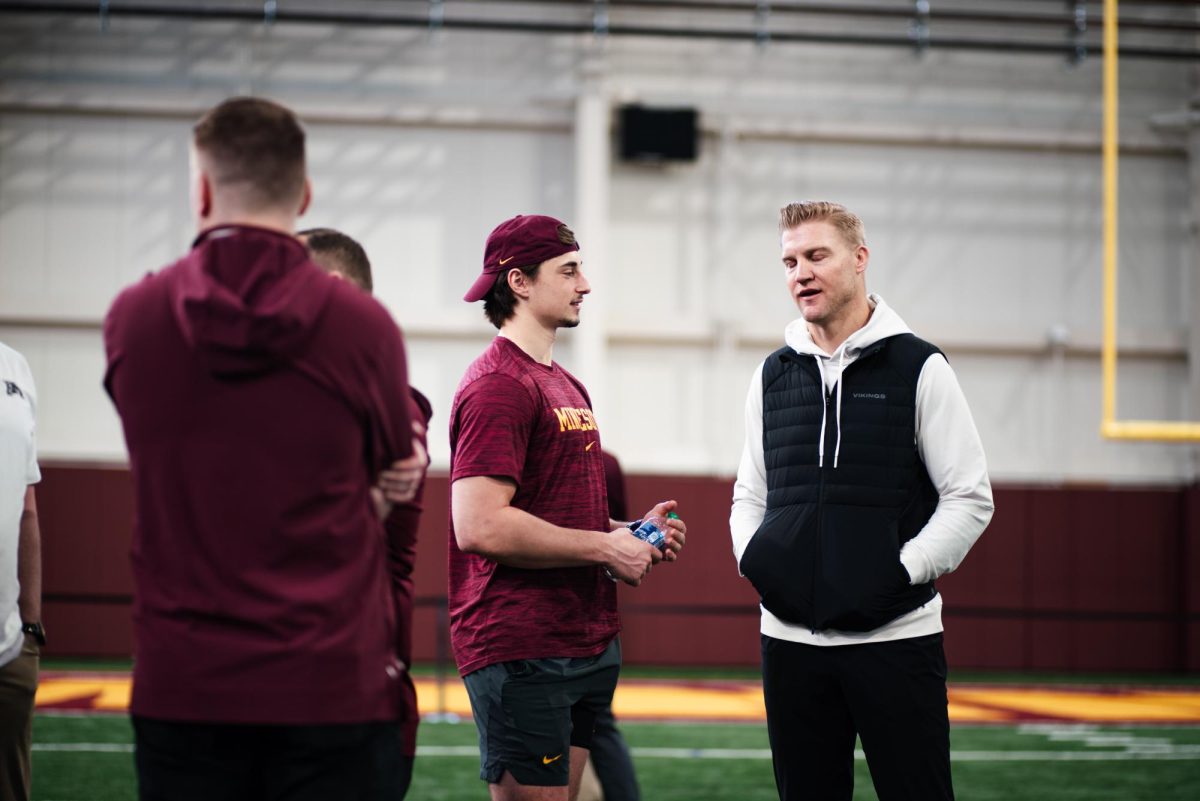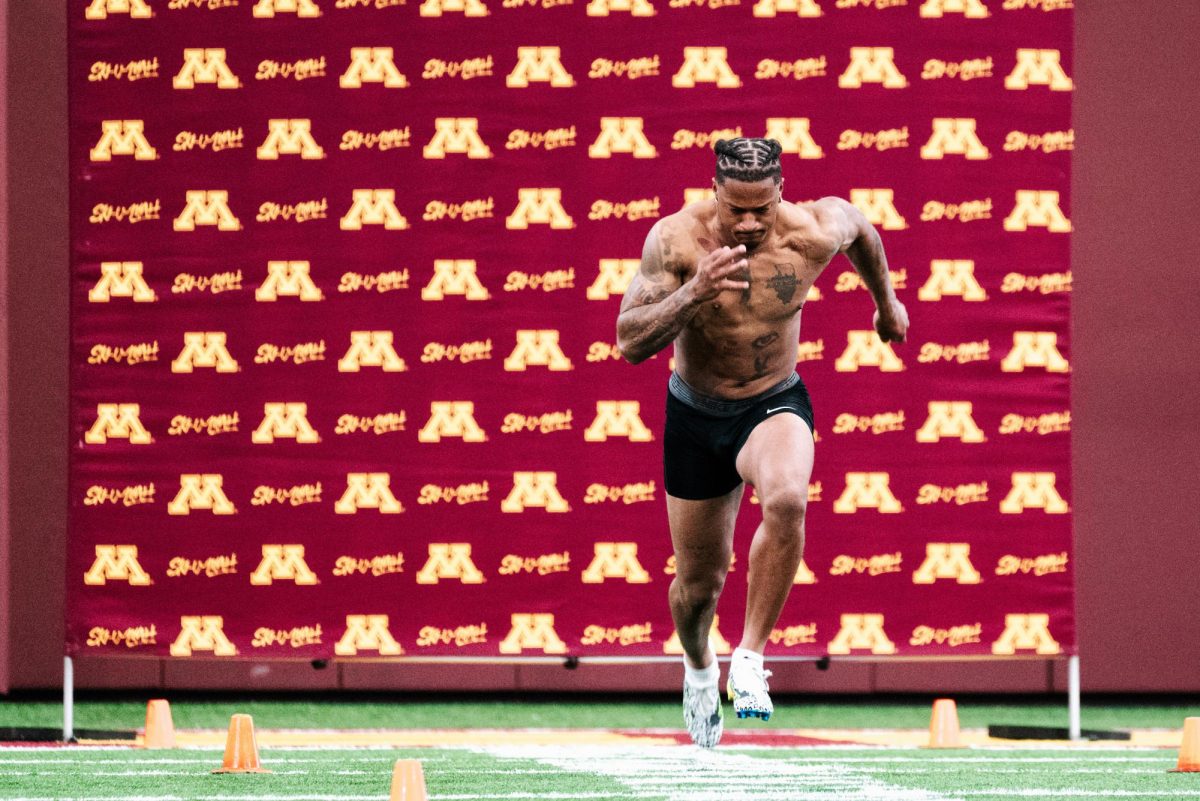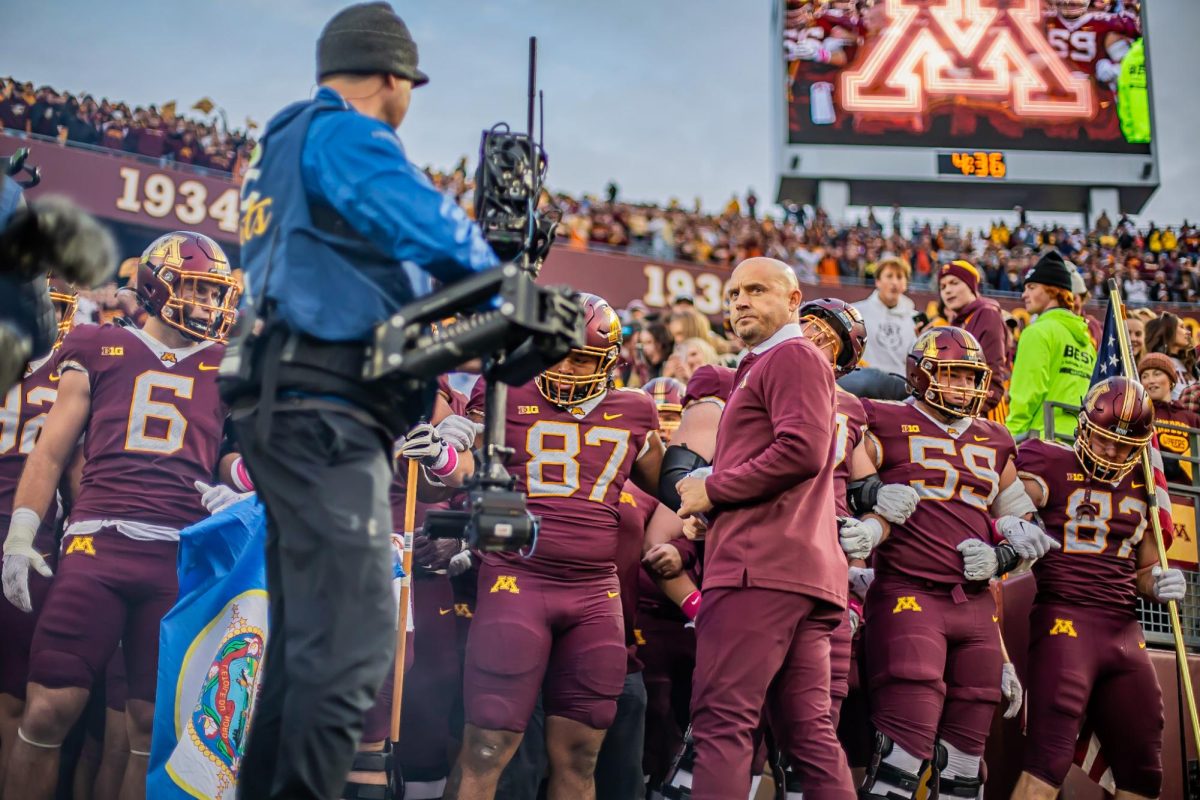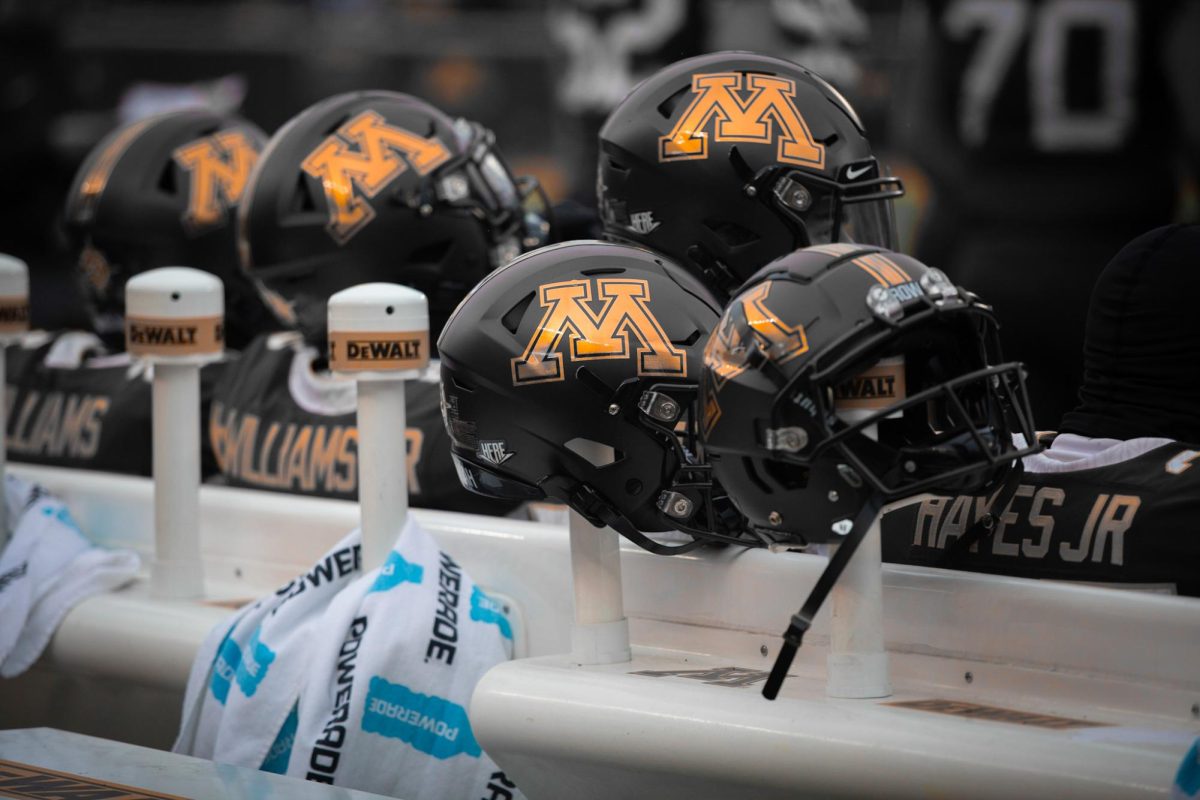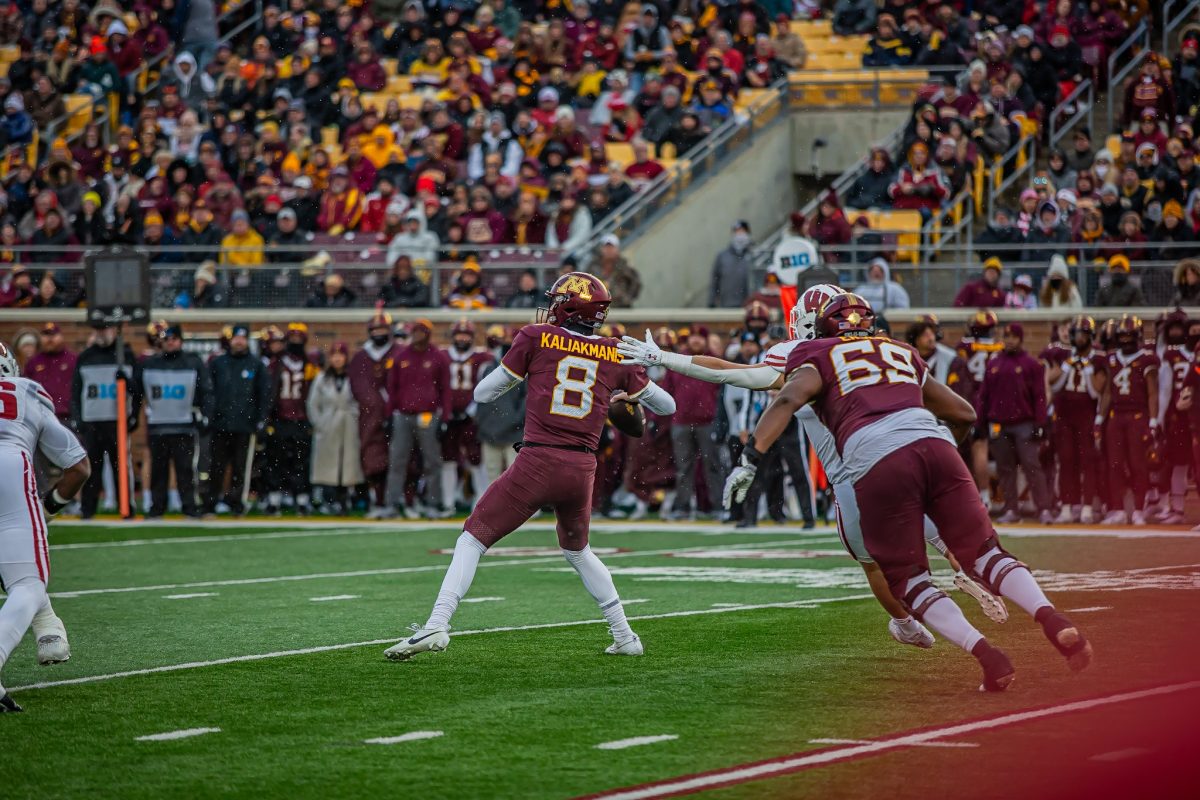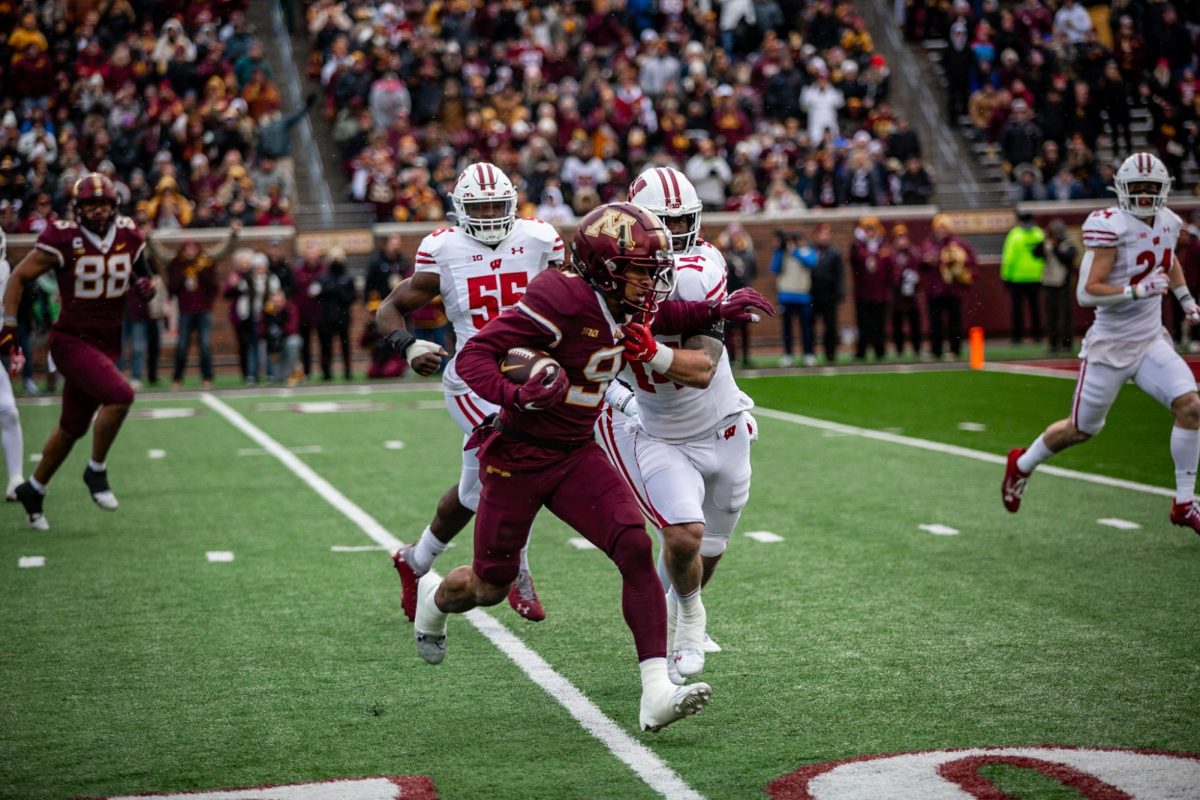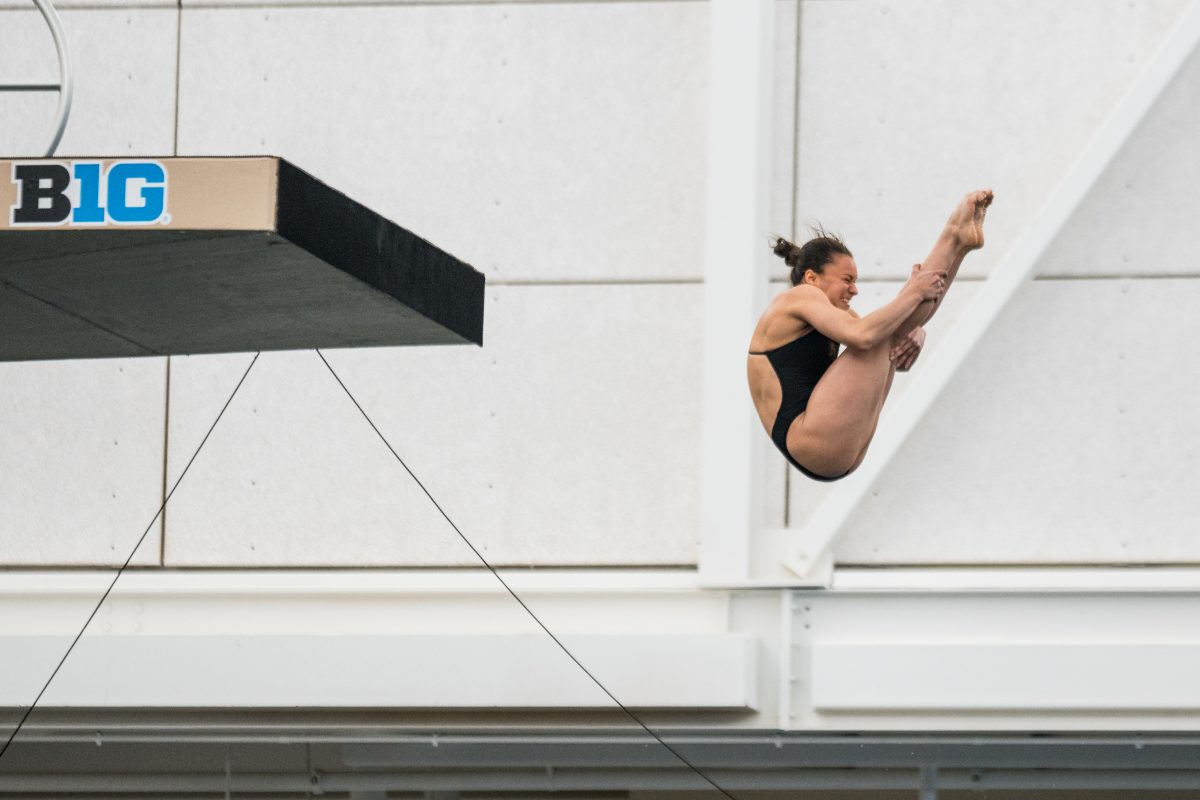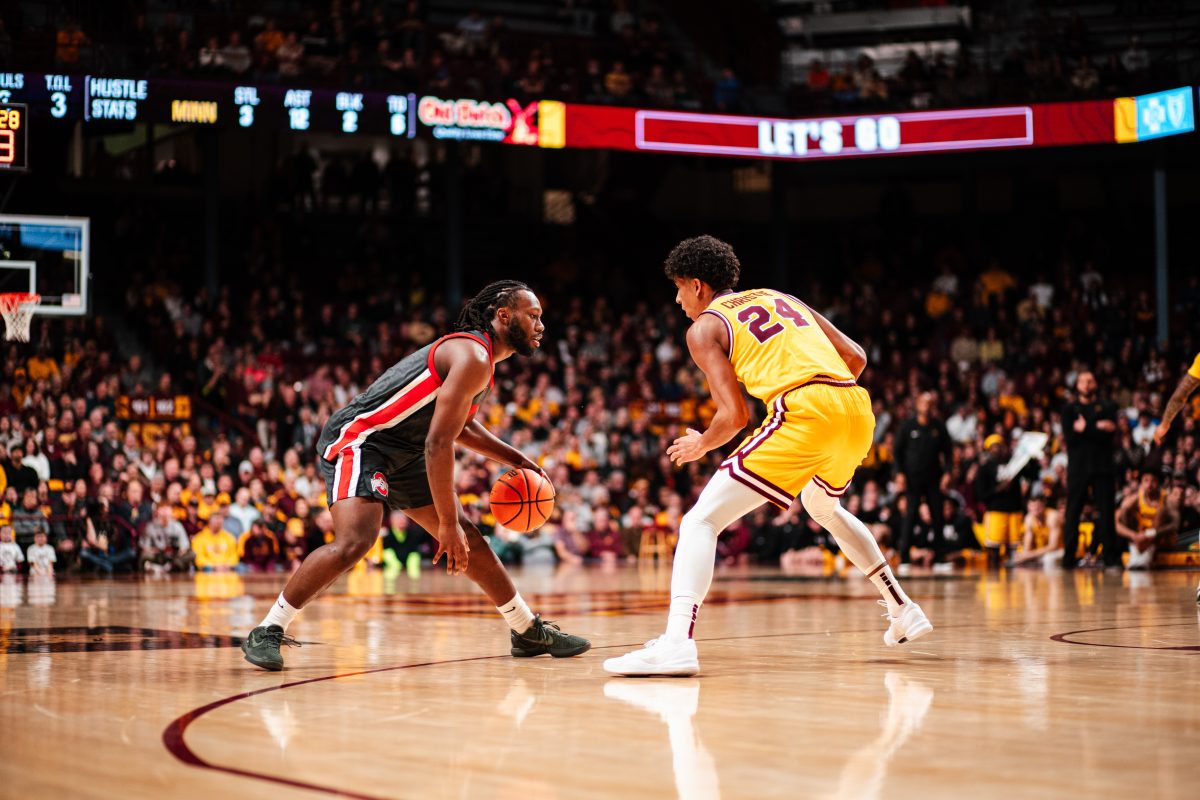The news of Chris Autman-Bell’s season-ending injury stunned the Gophers. It occurred during the team’s third matchup of the season; ever since they’ve been scrambling to find a solution.
Last year, the wide receiver managed his injuries before starting in 11 straight games. The injury this year is more severe. He could return for next season, but for now, the offense will continue to operate in his absence.
The top receivers benefitting from the Autman-Bell-less offense have been Daniel Jackson, Michael Brown-Stephens and Dylan Wright.
They all saw an increase in playing time in the last three games, but Jackson has experienced the most significant jump. He went from playing 8.1% of the team’s total snaps to 84.1%.
“He’s making plays for us,” Kirk Ciarrocca, Gopher’s offensive coordinator, said. “He’s learning from his mistakes and continuing to move forward.”
Jackson’s snap share is lower than last season in games without Autman-Bell (86.7%), partly because of the resurgence of Brown-Stephens and tight end Brevyn Spann-Ford, who both picked up their playing time and position groups in snaps played.
However, these increases were expected. It was recapturing Autman-Bell’s presence and production that presented challenges, ones that have yet to be met.
“It’s really simple, they have to stay aggressive,” said Ciarrocca. “You gotta attack. If you hesitate, you decrease your chances of having a positive outcome exponentially.”
In games where Autman-Bell was active (vs. New Mexico State, Western Illinois, Colorado), the wide receiver group averaged 12.2 yards per target (y/tgt) and was responsible for 72.3% of the team’s total targets.
Their production plummeted in the games since, averaging a mere 8.34 y/tgt and holding 57.1% of the team’s target shares.
Inconsistencies in usage and efficiency needed to be fixed for the offense to return to familiarity. Head coach P.J. Fleck addressed the issues by breaking them down into two factors: creating separation and making the plays present themselves.
“When we’re able to catch a ball in traffic and make plays, we’re really good,” said Fleck. He also noticed the inconsistencies affected Ciarrocca’s play-calling abilities.
“I watched the Michigan State game and we’re able to do that. The same guys making plays in traffic, playing big,” Fleck said. “When we don’t do that, it doesn’t allow our offense to be balanced. We become one dimensional really quick.”
As much as the receivers have struggled recently, they are not the only offensive position group to blame.
Quarterback Tanner Morgan faced more talented defenses after Michigan State, including an Illinois team that nullified Minnesota’s passing game into an afterthought.
“When you get behind the sticks on them, it discourages you from being able to keep going with the pass game,” Fleck said when asked about the strength of Illinois’ defense.
Morgan has a PFF passer rating of 22.2 when under pressure, among the worst in college football. And in the games against Purdue and Illinois, he was pressured on 34.5% of his dropbacks.
These conditions limit the opportunities receivers have to make a net-positive impact on the game, but that does not change the fact that they came up short when opportunities increased.
Despite their shortcomings, there is ample time for them to recoup lost production and resume their aggressive mentality. Minnesota has six more games left on their schedule, and after the Penn State game, the opposing defenses get easier.










